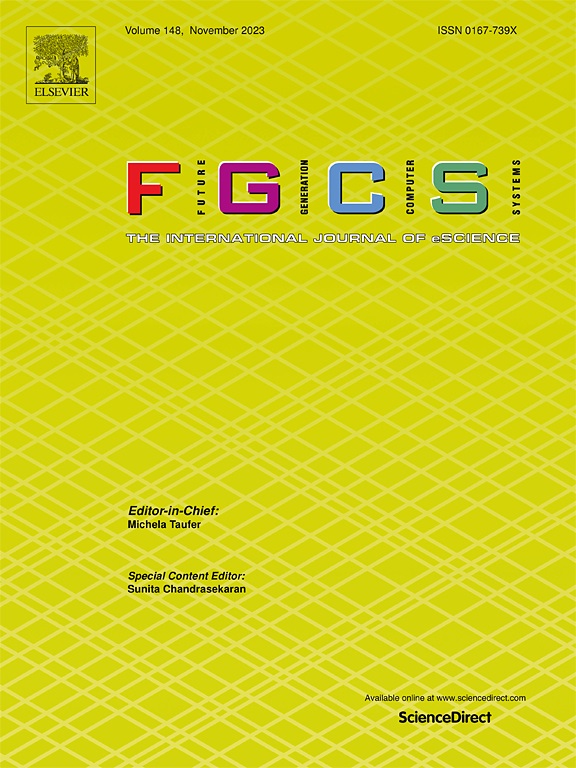Using binary hash tree-based encryption to secure a deep learning model and generated images for social media applications
IF 6.2
2区 计算机科学
Q1 COMPUTER SCIENCE, THEORY & METHODS
Future Generation Computer Systems-The International Journal of Escience
Pub Date : 2025-01-22
DOI:10.1016/j.future.2025.107722
引用次数: 0
Abstract
Deep learning (DL) plays a vital role in identifying critical features and patterns in digital images. Deep learning models and generated records, particularly digital images, are highly effective in media and other applications but pose privacy and security challenges. For example, healthcare professionals must understand how Artificial Intelligence (AI) makes decisions to trust and fully incorporate its findings into medical practice. This research addresses the security and privacy challenges associated with a DL model and generated records for social media applications. In this work, we propose a binary hash tree-based encryption that encrypts a customised model and generated images to minimise data leakage. The proposed method includes three parts. First is a customised autoencoder that minimises the size of digital images ensuring the security of generated images with a Henon chaotic map and ephemeral keys derived from a binary hash tree (BHT) for encryption in a Galois field (GF). Further, we encrypt the fewest possible weight parameters of the customised model with the same ephemeral key to preserve privacy. By doing so, our method reduces data leakage and further improves the model security at the same time. Extensive experiments reveal that the proposed method is more secure against attacks than state-of-the-art methods, which could be helpful in media and several other applications. To the best of our knowledge, we are the first to explore a secure system that protects both the model and the generated media at the same time using an encryption technique.
求助全文
约1分钟内获得全文
求助全文
来源期刊
CiteScore
19.90
自引率
2.70%
发文量
376
审稿时长
10.6 months
期刊介绍:
Computing infrastructures and systems are constantly evolving, resulting in increasingly complex and collaborative scientific applications. To cope with these advancements, there is a growing need for collaborative tools that can effectively map, control, and execute these applications.
Furthermore, with the explosion of Big Data, there is a requirement for innovative methods and infrastructures to collect, analyze, and derive meaningful insights from the vast amount of data generated. This necessitates the integration of computational and storage capabilities, databases, sensors, and human collaboration.
Future Generation Computer Systems aims to pioneer advancements in distributed systems, collaborative environments, high-performance computing, and Big Data analytics. It strives to stay at the forefront of developments in grids, clouds, and the Internet of Things (IoT) to effectively address the challenges posed by these wide-area, fully distributed sensing and computing systems.

 求助内容:
求助内容: 应助结果提醒方式:
应助结果提醒方式:


